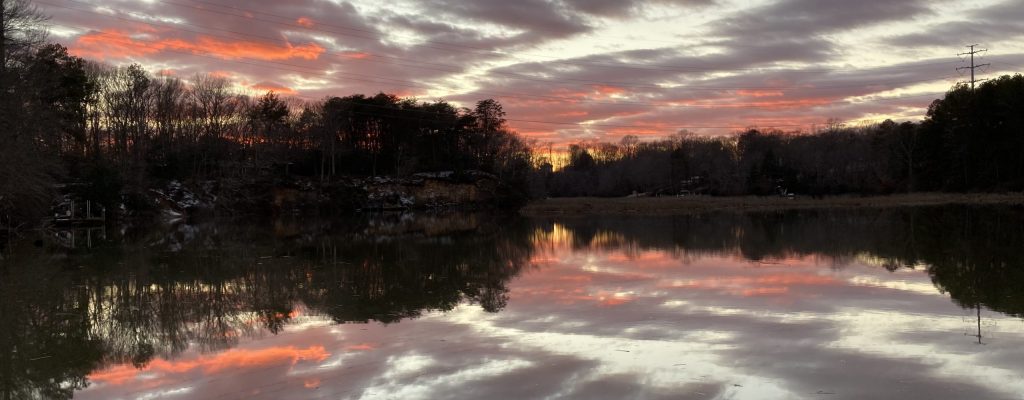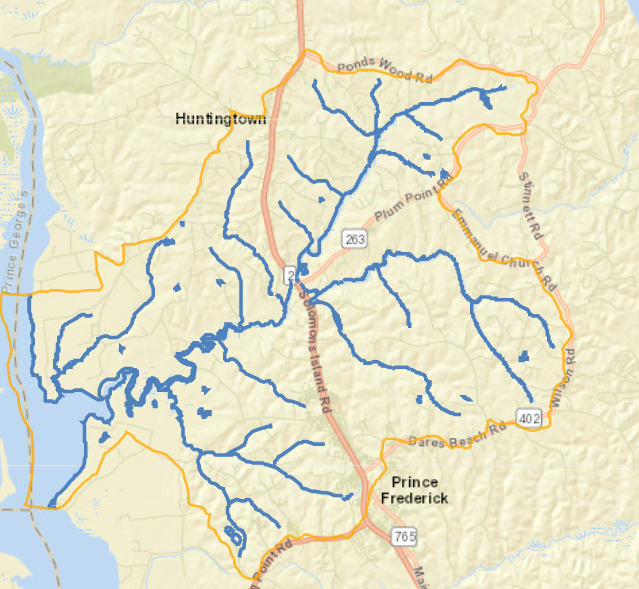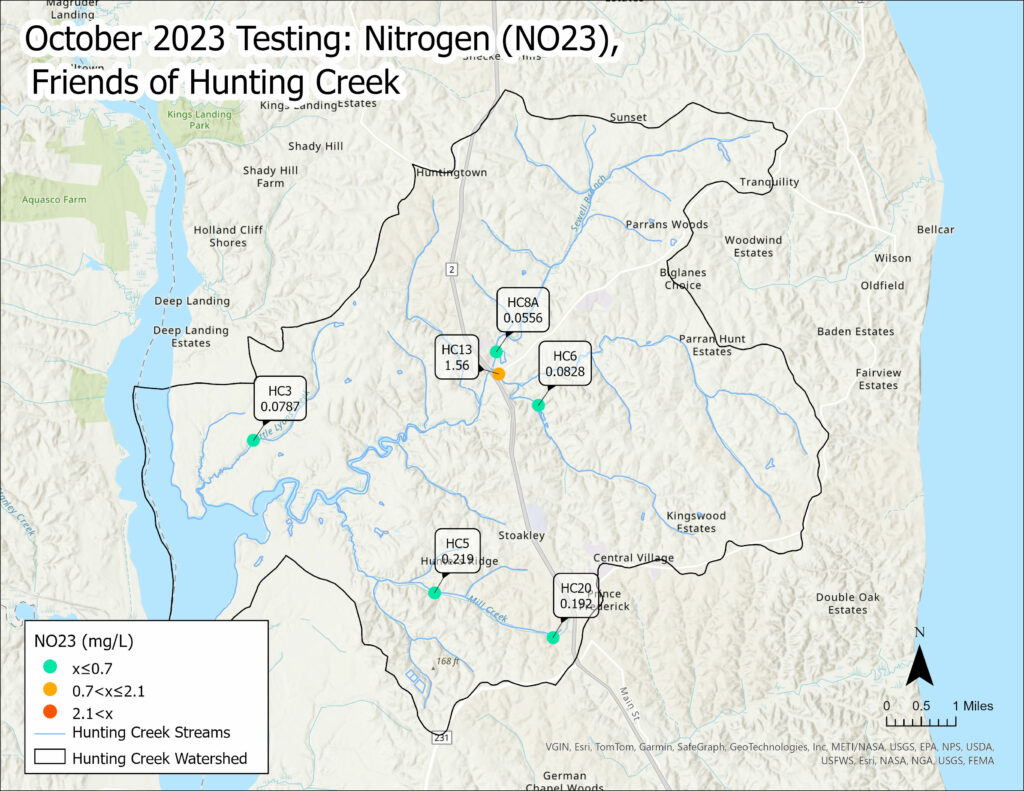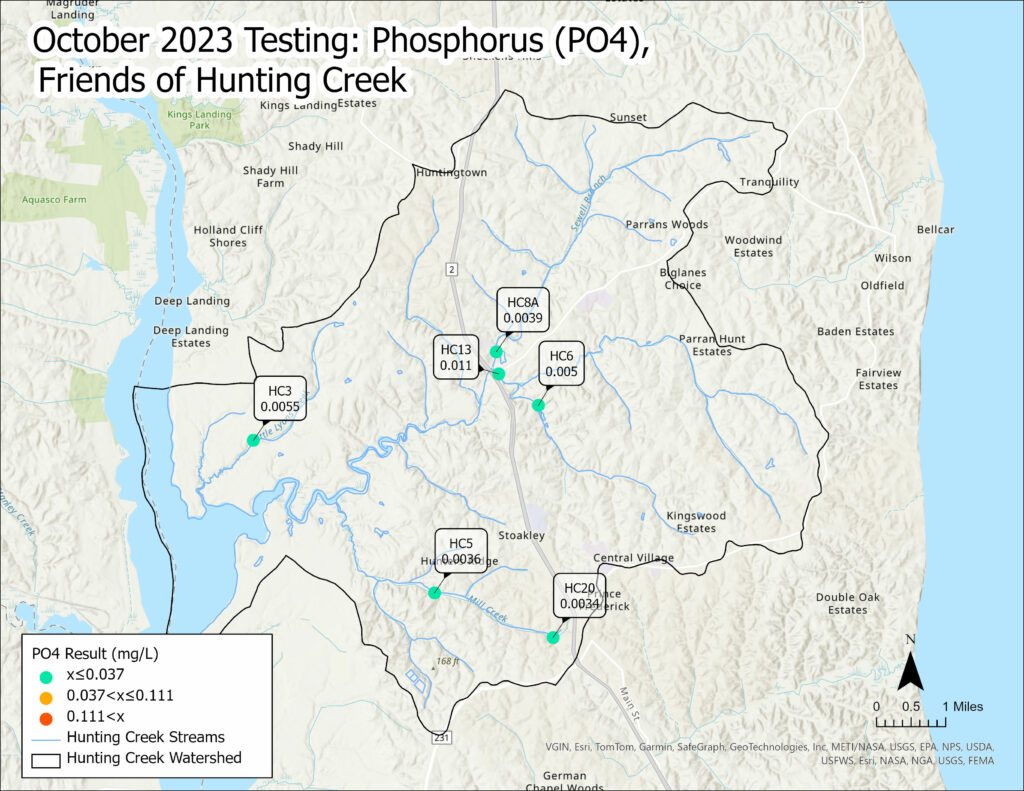Friends of Hunting Creek

Table of Contents
Who We Are
The Friends of Hunting Creek is a group of concerned citizens in the Hunting Creek Watershed partnering with the American Chestnut Land Trust to advocate for the health of Hunting Creek and host events that give community members an opportunity to explore the natural resources around them!
Our Vision
The Friends of Hunting Creek envision a future where current residents and future generations act as stewards of a balanced ecosystem functioning sustainably within a healthy, resilient Hunting Creek watershed.
Our Mission
The mission of the Friends of Hunting Creek is to promote the ecological health and resiliency of the watershed’s 50 miles of streams and landscape so that landowners, citizens, government agencies, and elected officials together take an active role in protecting and sustaining the natural and cultural resources.
Facts About Hunting Creek
- The Hunting Creek watershed covers 19,126 acres of central Calvert County, Maryland.
- It is the largest of the County’s 22 watersheds and a major tributary to the lower Patuxent River.
- The mainstem Hunting Creek and its many tributaries comprise about 50 miles of tidal and non-tidal streams.
- The eastern, western, and southern portions of the Prince Frederick Town Center drain into Hunting Creek.
- The watershed is currently 56% forested, 29% farmland, 8% impervious land cover, and is criss-crossed by 120 miles of roads
- The Friends of Hunting Creek are committed to ensuring that the 9,500 people who live in the watershed will continue to thrive among Nature’s abundance. 19,126 acres

Citizen Science
- Water Quality Monitoring In recent years, the Friends of Hunting Creek have participated in ACLT’s annual Water Quality Blitz, in 2023 testing over 20 sites throughout the watershed. See the links under “Hunting Creek Publications” above for the full reports.
- Community Engagement We host paddles on a regular basis in order to get together with current members and connect with the community and the land!
- Stormwater Management Issues The Friends of Hunting Creek has also been monitoring the recent development in the Prince Frederick Town Center and our current storm water management systems. One of the Friend’s keystone issues has become preventing the increase in impervious land cover across the watershed. Check out the slides below, and the link to our StoryMap to learn more!
New! 2023 Water Quality Report
2023 was our third year of water quality testing in the watershed. This year, 22 sites were tested throughout Hunting Creek, all of which were measured for nitrogen (NO23) and phosphorus (PO4), and 4 of which were analyzed for macroinvertebrates and eDNA. Click below to read our comprehensive report on the results!
Quarterly Testing Program
In October 2023, the Friends of Hunting Creek began a quarterly water testing program to supplement the annual Blitz testing. The FOHC selected six sites of highest priority to sample 4 times a year for various parameters. The Chesapeake Biological Laboratory analyzed the samples for for nitrate + nitrite (NO23), phosphate (PO4), ammonium (NH4), and Total Suspended Solids. The FOHC analyzed the samples for turbidity using an Apera TN400 Turbidity Meter. The results are mapped below.
Nitrogen (NO23)
As stated above, nitrogen is one of the leading pollutants in the Bay and the Patuxent River. Of the six sites tested by the FOHC in October, only one was above the 0.7 mg/L “good” threshold, at 1.56 mg/L.

Phosphorus (PO4)
The six quarterly sites were also tested for phosphorus, a parameter that the FOHC have similarly measured during the past two water quality blitzes. The six sites all tested below the 0.37 threshold, indicating “good” phosphorus levels in October.


Hunting Creek Publications
- Environmental DNA in Hunting Creek: https://www.acltweb.org/index.php/the-rills-are-alive-with-strands-of-dna/
- Hunting Creek Highway sign: https://www.acltweb.org/Hunting-Creek-Sign
- Hunting Creek ecosystem services: https://www.acltweb.org/FOHC-ecosystem-services
- Spring 2021 Water Quality Report
- Spring 2022 Water Quality Report
- Spring 2023 Water Quality Report
Get Involved!
Interested in joining the Friends of Hunting Creek? Like us on Facebook to keep up with event announcements or join our mailing list to hear about upcoming meetings and events.